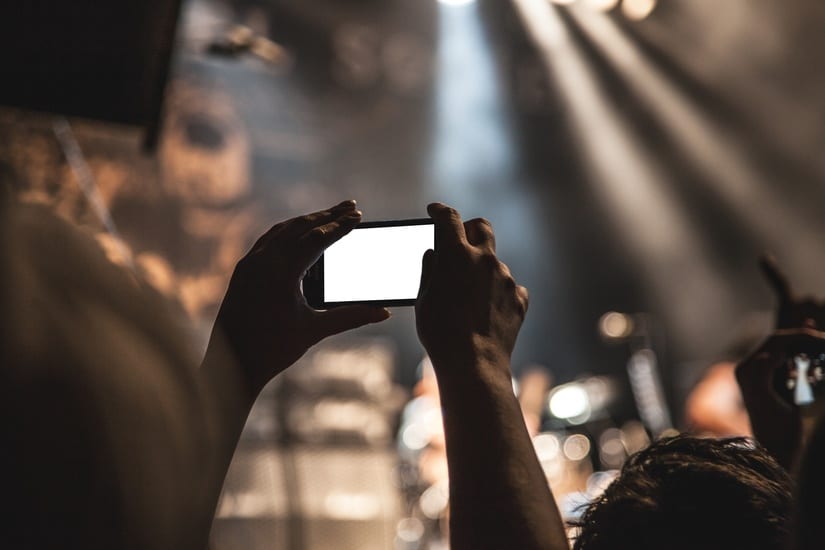In the world of digital marketing, mobile marketing, social branding and multimedia journalism, we hear over and over again that “Content is King.” Which, incidentally, I happen to agree with. Regardless of platform, quality content rules all. The key part of that sentence being “quality.”
What we refer to when we mention “content” is developing content that offers something of value to your customers or other audiences, brings something new to an existing conversation and/or helps reinforce your organization’s brand beyond the ubiquitous seven tips.
As digital, mobile and social play an expanding role in our public relations campaigns, photos and video are becoming a critical part of the content mix. However, there’s often a fear of the investment associated with professional photos and video.

While there’s no substitute for professionally produced imagery, there is a dirty little secret to the brave new world of content marketing and social communications: ugly photos are better than no photos, and you have access to a pretty much fool-proof camera right in your pocket. Most smartphones will take a quality photo or video that you can use for social, press releases, or your website, if you know how to get the most out of them.
Here’s a quick and dirty field guide to taking quality photos with your smartphone.
Your body is your tripod. Pull your phone in close to your face and your arms in close to your body. This will help stabilize the camera, reducing blur and shake, while ensuring a crisp shot. And if there’s a convenient wall, tree or light post, use it to further steady your shots.
Sometimes mechanical is better. The camera app gives you a pretty (digital) trigger right on screen. Stop using it. That button takes your hand away from the phone and causes the camera to shake when you “press” it. Instead, use the mechanical shutter trigger. The volume control on the side of your phone will trigger the shutter and keep your hands where they belong – steadying your camera to produce sharper photos. (I use an iPhone, but assume there’s a similar function on non-Apple devices.)
Go sideways. Instead of holding the phone like a phone, turn it on its side to hold it like a camera. It will feel more natural and give you greater control.
Get close. However close you are, take two steps closer to your subject. If you’re doing close-up work already, this may feel a little awkward, but this is a trick they teach in photo programs at all levels. However close you feel, you’re still not close enough. (Also – remember that your phone is not a telephoto camera. You may have a zoom function on your camera, but using it is only going to get you grainy photos. If at all possible and safe to do so, forget the zoom function and rely on that old standby – your feet.)
Shoot like a cigar. In other words, big and unfiltered. First, go into your settings and set the camera to take the highest file size allowed. You can always reduce the file size later, but you’ll be amazed at what you can correct with a bigger file. And forget about the apps – Instagram and other photo apps often lay down filters and crops automatically. Shoot with the native camera app and leave the filters off.
Know the rule of thirds. Use the rule of thirds. Love the rule of thirds. The rule of thirds is one of the first things taught to beginning photographers due to its basis for balanced and interesting shots. The theory is that you mentally divide your viewfinder into a 3×3 grid and place points of interest on the intersections or along the lines of that grid. While we all know rules are made to be broken, if you’re inexperienced, adhering to the rule of thirds will help you immediately up your photo game. As a bonus, many camera apps lay a 3×3 grid across the viewfinder.
Take lots of photos. Digital photography allows us the luxury of more than just 24 exposures to a roll. (Those of us who remember when real film was the only choice may have a different appreciation for this.) If you’re shooting for a client or an event, however many shots you’re taking isn’t enough. Take more, try different angles, try up close and way back. The sorting process will tell you a lot about what works, and the more you have to choose from, the better your chances that you caught something worth keeping.
Get comfortable with imperfection. You’ve probably heard the mantra “perfect is the enemy of good.” Your goal here is to provide a visual aspect to your content. As long as your imagery is in focus and relates to your story, it has value. Don’t get caught up in perfection. Get caught up in good.
So remember: ugly photos are better than no photos. And seriously, stop taking ugly photos. Following these suggestions will help you improve your photography and layer a new dimension to your content. Photography, perhaps especially phone-photography, is a skill – the more you shoot, the better you’ll get and the more you’ll have to work with. Pretty soon there’ll be no more ugly photos on your website and content channels.
— by Michael Geneseo, Broadreach Account Executive

